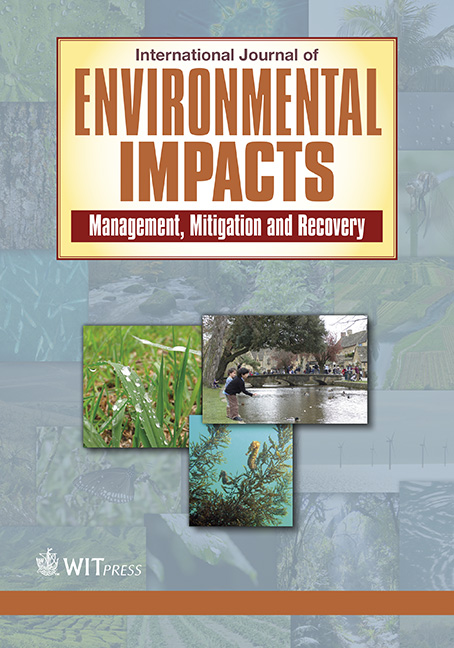The water nexus in southwestern Idaho, USA: Development versus agriculture
Price
Free (open access)
Volume
Volume 3 (2020), Issue 3
Pages
11
Page Range
248 - 259
Paper DOI
10.2495/EI-V3-N3-248-259
Copyright
WIT Press
Author(s)
Robert L. Mahler
Abstract
The Snake River Plain is a rapidly growing region in southwestern Idaho, USA. The Snake River Plain is arid and receives less than 300 mm of annual precipitation. Even though this is a desert biome, irrigation water from the local mountains transforms the region into an agricultural oasis. However, there is a finite amount of available water. The region is rapidly growing as the population is annually increasing by 20,000 people. Thus, there is a rapid transformation from irrigated farmland to suburbs. The goals of this paper are to evaluate: (1) population growth, (2) public opinion about the pros and cons of population growth, (3) current agricultural crops and water use, (4) if water is actually a limited commodity and (5) strategies to optimize the population growth-agriculture nexus in southwestern Idaho. This rapid population growth is displacing traditional irrigated agriculture and shifting a portion of the water use to the urban sector. The population of the six-county region that comprises the Snake River Plain in southwestern Idaho has grown from 202,400 in 1970 to 744,800 in 2019. Most of the growth is not natural, but rather caused by in-migration from other states, especially California, Utah and Washington. The population growth rate is actually increasing. Consequently, up to 45% of the farmland in the valley may be transformed into urban/suburban housing in the next 25 years. The purpose of this paper was originally to determine the strategies needed to maintain sustainable water resources for both the urban and agricultural sectors. However, many planners are unsure of the impact of changing water use from agriculture to urban on the total amount of water that will be needed. Annual irrigation water use ranges from 400 to 1,150 mm depending on the crop. Water use differences between crops may allow for better water management as land use changes. It is unclear if the suburban/urban development of the irrigated farmland will result in an increased, decreased or unchanged demand for water use. Because of this uncertainty about water demand the proposed strategy to cope with changing land use is water neutral. Irrigated agriculture in the six-county area will lose up to 45% of its land base by 2045. To reduce the impact of the land base loss agriculture should focus on retaining or expanding its high value crops – vegetable seeds, onions, hops and mint. The agriculture industry should reduce the amount of land devoted to cereals, alfalfa and hay pastures over the net 25 years. An implemented crop selection strategy could partially offset the economic loss to agriculture associated with a major reduction of irrigated land. The best soils (capability classes 1 and 2) should be protected to continue to support irrigated agriculture. Conversely, soils with capability
Keywords
changing land and water use, public opinion, water development issues, water quality




